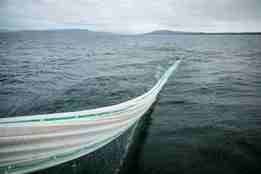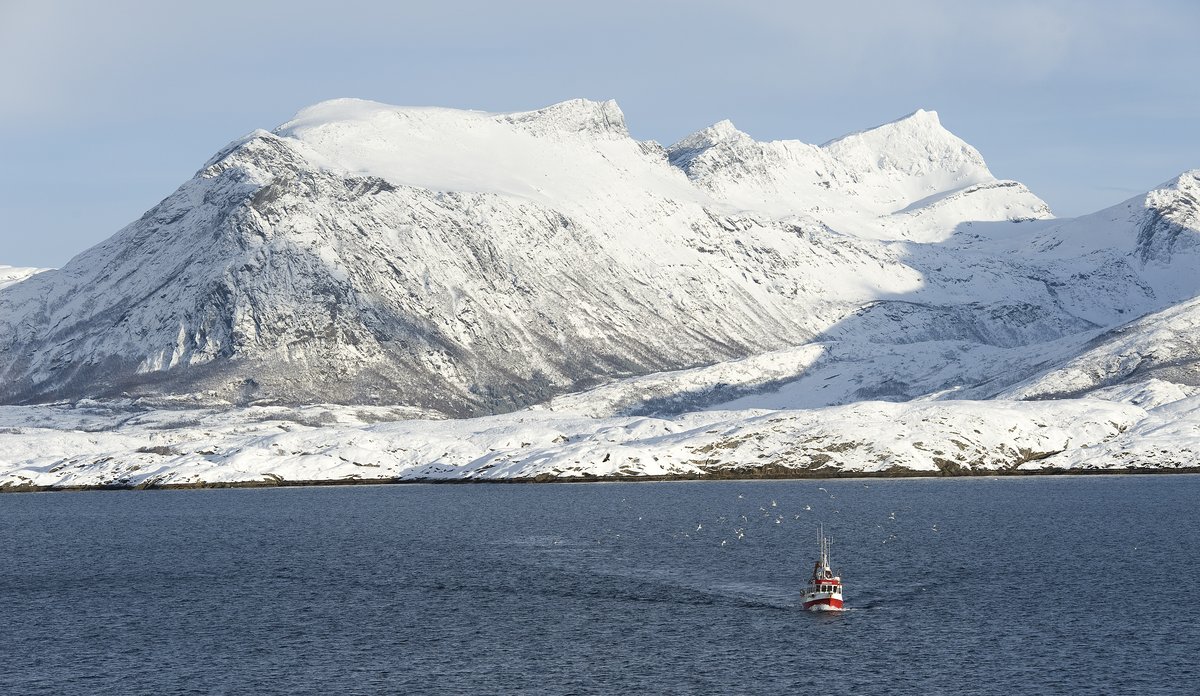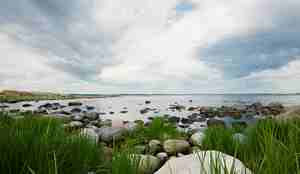Norway has the world’s second-longest coastline, only beaten by Canada. The total length of the Norwegian mainland coastline, which snakes in and out of fjords, is around 24,000 km, or approximately half of the way around the Equator. If we include all of the islands as well, the total coastline is almost 102,937 km long.
Published: 28.01.2019
Updated: 20.01.2025
Since our coastline stretches approximately 23 degrees of latitude from Lindesnes to Svalbard, conditions along the coast also vary greatly between the south and north. The life found deep in the fjords is also unlike the life out at sea.
The differences encompass both the species that thrive in each place, and physical conditions such as currents, temperatures and salinity.
A large proportion of the Norwegian population lives near the coast. These areas are therefore heavily exposed to human influences, both from businesses and private individuals.
The Institute of Marine Research (IMR) carries out extensive research along the coast and in the fjords. We survey currents, temperatures and salinity. We also survey the populations of fish and other species: their size, their distribution and where they spawn. The IMR produces fish stock estimates for various species, and advises the authorities on appropriate fishing quotas, mainly through the International Council for the Exploration of the Sea (ICES). In addition, the IMR is engaged in major research projects involving monitoring and surveying how aquaculture affects ecosystems.
The Norwegian coast
The most important transport artery along the Norwegian coast is the Norwegian Coastal Current. From Skagerrak in the south, it runs north all the way up the coast before dividing: one branch continues north towards Svalbard and the other one enters the Barents Sea.
The water in the Norwegian Coastal Current is less salty than the surrounding waters. This is because the current is fed by brackish water from the Baltic Sea and fresh water from Norwegian rivers. This water is then mixed with water from the North Sea and the Atlantic Ocean. The Norwegian Coastal Current travels up the coast as a wedge-shaped current. The salinity of the water gradually increases on its way north, as more Atlantic water is mixed in.
Unlike in open water, large algae, such as brown algae, play an important role in coastal ecosystems. Many fish and other animals live in the kelp forests, and other species go there to find food.
This great diversity of species is one of the key foundations for Norway’s coastal fisheries, which have been exploited for over a thousand years. These fisheries remain important, including for recreational fishing: many Norwegians continue to harvest what the coast has to offer, such as lobster and coastal cod.
The fjords
The Norwegian fjords are very diverse – no two fjords are identical!
A barrier of islands and skerries protects a high proportion of our coastal zone and fjords from the waves and wind of the open seas. Deep fjords, carved out by glaciers over 10,000 years ago, cut into the Norwegian geography. There is often a threshold at the mouth of the fjord. This reduces the circulation of water between the deep fjord basin and the sea outside it, which is often shallower.
Some big fjords in the counties of Troms and Finnmark, such as Porsangerfjorden, lack this sea threshold. These fjords are therefore classed as bays.
Large quantities of fresh water flow into our fjords from the surrounding rivers. This water mixes with the salt water in the fjords, resulting in moderately salty “brackish” water. This water is normally found in the top 5-10 metres of the fjord.
Norway’s longest fjord is Sognefjorden. It is roughly 200 km long, and up to around 1,300 metres deep. Apart from Sognefjorden, the deepest Norwegian fjords are roughly 700 metres deep. However, the majority of Norwegian fjords are 300 to 500 metres deep.
Animals that live in the deep fjords are more isolated than ones that live out at sea. Even when fjords are close together, the distance that a fish has to swim in order to travel from one fjord to the next is often long. The fact that the fish are isolated from even their closest neighbours means that they can be viewed as separate populations.











